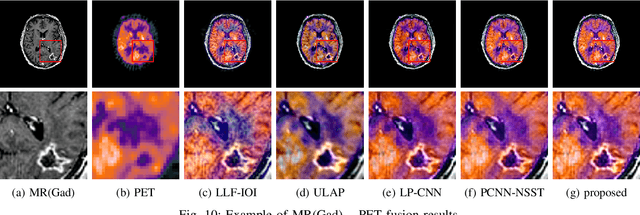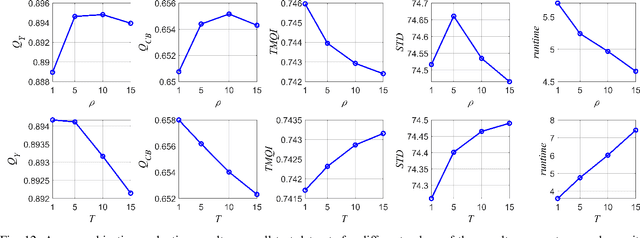Farshad G. Veshki
An Efficient Approximate Method for Online Convolutional Dictionary Learning
Jan 25, 2023



Abstract:Most existing convolutional dictionary learning (CDL) algorithms are based on batch learning, where the dictionary filters and the convolutional sparse representations are optimized in an alternating manner using a training dataset. When large training datasets are used, batch CDL algorithms become prohibitively memory-intensive. An online-learning technique is used to reduce the memory requirements of CDL by optimizing the dictionary incrementally after finding the sparse representations of each training sample. Nevertheless, learning large dictionaries using the existing online CDL (OCDL) algorithms remains highly computationally expensive. In this paper, we present a novel approximate OCDL method that incorporates sparse decomposition of the training samples. The resulting optimization problems are addressed using the alternating direction method of multipliers. Extensive experimental evaluations using several image datasets show that the proposed method substantially reduces computational costs while preserving the effectiveness of the state-of-the-art OCDL algorithms.
Convolutional Simultaneous Sparse Approximation with Applications to RGB-NIR Image Fusion
Mar 18, 2022



Abstract:Simultaneous sparse approximation (SSA) seeks to represent a set of dependent signals using sparse vectors with identical supports. The SSA model has been used in various signal and image processing applications involving multiple correlated input signals. In this paper, we propose algorithms for convolutional SSA (CSSA) based on the alternating direction method of multipliers. Specifically, we address the CSSA problem with different sparsity structures and the convolutional feature learning problem in multimodal data/signals based on the SSA model. We evaluate the proposed algorithms by applying them to multimodal and multifocus image fusion problems.
Efficient ADMM-based Algorithms for Convolutional Sparse Coding
Sep 07, 2021



Abstract:Convolutional sparse coding improves on the standard sparse approximation by incorporating a global shift-invariant model. The most efficient convolutional sparse coding methods are based on the alternating direction method of multipliers and the convolution theorem. The only major difference between these methods is how they approach a convolutional least-squares fitting subproblem. This letter presents a solution to this subproblem, which improves the efficiency of the state-of-the-art algorithms. We also use the same approach for developing an efficient convolutional dictionary learning method. Furthermore, we propose a novel algorithm for convolutional sparse coding with a constraint on the approximation error.
Coupled Feature Learning for Multimodal Medical Image Fusion
Feb 17, 2021



Abstract:Multimodal image fusion aims to combine relevant information from images acquired with different sensors. In medical imaging, fused images play an essential role in both standard and automated diagnosis. In this paper, we propose a novel multimodal image fusion method based on coupled dictionary learning. The proposed method is general and can be employed for different medical imaging modalities. Unlike many current medical fusion methods, the proposed approach does not suffer from intensity attenuation nor loss of critical information. Specifically, the images to be fused are decomposed into coupled and independent components estimated using sparse representations with identical supports and a Pearson correlation constraint, respectively. An alternating minimization algorithm is designed to solve the resulting optimization problem. The final fusion step uses the max-absolute-value rule. Experiments are conducted using various pairs of multimodal inputs, including real MR-CT and MR-PET images. The resulting performance and execution times show the competitiveness of the proposed method in comparison with state-of-the-art medical image fusion methods.
 Add to Chrome
Add to Chrome Add to Firefox
Add to Firefox Add to Edge
Add to Edge